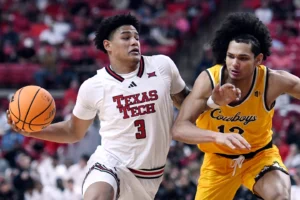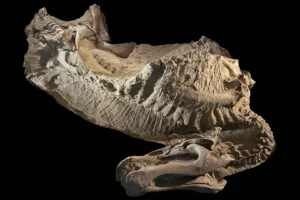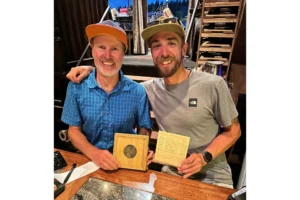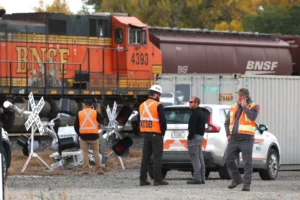WYOMING SCHOOLS AT A CROSSROADS: Finding Equal Footing in Hispanic Heritage Month
UW professor highlights challenges faced by Hispanic students in Wyoming
- Published In: Other News & Features
- Last Updated: Sep 23, 2022

By Elizabeth Sampson
Special to the Wyoming Truth
Not all Wyoming students face the same back-to-school challenges. For some, being part of a racial minority makes it hard to fit in at their schools. Others work after-school jobs to help pay the family food bill.
Cecelia Aragon, 54, understands these struggles. A tenured professor at the University of Wyoming, Aragon is an interdisciplinary scholar whose work focuses on gender, women and sexuality studies; Chicano and LatinX theater; and education in theater and dance. She grew up in Santa Fe, N.M., with a Spanish-American father and a mother who was first-generation Mexican-American, Navajo and Pueblo. Life wasn’t easy: Aragon remembers pooling the money she earned with her family to help pay for food and household expenses. Her family moved to Texas when she was a teen, and she suddenly found herself feeling displaced in a school where students weren’t encouraged to value their cultural heritage.
Aragon also is the executive director of the annual Wyoming Latina Youth Conference, which brings together Latina girls in the 5th-12th grades for a weekend of educational workshops during Hispanic Heritage Month (Sept. 15-Oct. 15). Participants meet and hear from national Latina leaders, connect with college-aged student mentors and spend time with their peers from across the state. The conference will take place in Laramie on Oct. 14-15.
As Aragon prepares for the conference, the Wyoming Truth spoke with her about the educational challenges faced by Hispanic students. What follows are excerpts from the conversation.

Why is what you teach important to you?
Aragon: I strongly feel that I give the students opportunity and knowledge to explore what this institution of theater means. What they know is a background of that white stage, and for me, it is to open up the scope of their understanding and knowledge of what it means—the definitions of performance, ritualism, celebration, pageantry and community activism.
Do you prefer the term Hispanic or Latino?
Aragon: To begin with, both terminologies are very general and broad. It doesn’t really give an identity to a person. Both terminologies historically have been government driven, so based on census, based on the ethnic composition of the United States. They’re very branding. It doesn’t say anything about who I am. I don’t identify as either one of those. Mexican-American Indigenous Chicana—those are my terminologies….
When I was going to school in the ‘70s and ‘80s, Hispanic was a way to assimilate. Hispanic was a way to be accepted by the white people. To be Mexican was to be bad, was to be an immigrant. And to be Indian was to be a very stereotyped personality. To me the educational system seemed too big for me–very intimidating. I couldn’t fight it…You get older, you find your space, you find your identity, I began to embrace Mexican-American. My parents were always telling me, “You are Chicano. You are Mexican-American. These are your roots.” It wasn’t until high school that I started fully understanding that.
When you do use that terminology, LatinX, then you’re talking a broader experience within the United States. You’re talking about Puerto Rican experience, Dominican experiences, Cuban experience… all of Mexico, Central America, South America—but in the U.S.
What educational challenges are faced specifically by Latino students?
Aragon: I think there’s a lot of issues that young Latinas face in the school system. A lot of these girls have a hard time building community in their high schools. They want to assimilate. They want to be accepted, and they want to have some representation. They want to be valued for who they are culturally.
Young Latinas need to be in leadership positions in their schools. It really comes down to trust and respect between those cultures: the American dominant white culture trusting and respecting that LatinX people can get in there and get the job done. For me, I create the opportunities if they are not there. If they are not giving it to me, guess what, I’m creating my own opportunities, and I will show you what I can do. That’s what I try to teach these young girls at all of the workshops they take—power of choice. You have, to some degree, control of the decisions you make. Don’t always expect anybody to hand those opportunities to you. Just create them. If there’s a problem, be part of that solution.
How does the Wyoming Latina Youth Conference benefit these students?
Aragon: They all get here, and they are like, “There’s 300 of us that look alike! Where have you been?” The best thing about it is they’re talking both English and Spanish. They find a community here. They make friends. They make connections, and they come here year after year.
A report from Excelencia in Education found that 44 percent of Latino students are the first in their family to attend college and that they are more likely than other ethnic or racial groups to be first-generation college students. What are some of the unique challenges they face?
Aragon: Speaking from my own experience, I come from a working-class background, and when I told my parents I was going to go to college, the first thing they said is: “Why? What are you going to do with your degree, and what kind of job will you get?” That’s the mentality that we still have in our culture, because economics is a big issue. Money is important to a Latino family. If you come from a large family like I did, 10 brothers and sisters, we needed to find a job to pay for housing, to pay for food.
So funding college is a primary challenge?
Aragon: That percentage that you’re talking about, that 44 percent, we don’t have a savings account for college. I think that socioeconomic reasons make a big difference. Why is there a percentage that just only can make it to this level of education? Because of scholarships, because of money, because it becomes very expensive. They struggle. Thank God for the Hathaway [the state-funded scholarship available to eligible Wyoming students to attend any of Wyoming’s community colleges or UW]. But some of the students don’t have the Hathaway, so they’re working at Dairy Queen and they’re going to school full time. To me, that’s kind of a real imbalance of life. That’s the reality of some of these LatinX students.
What needs to be done to help further the educational successes of the community?
Aragon: I can definitely say that the Hathaway scholarship excludes undocumented students. If you’re undocumented, you don’t get the Hathaway, and I think that needs to change. You’re undocumented; your family has laid down the oil pipeline for a Gillette oil company; you’ve lived in Gillette for 20 years; and you can’t have the Hathaway? But somebody moves from Utah, has four kids, and all of those four kids, in less than a year, get the Hathaway full ride.
There’s a social injustice in that. So policy needs to change on that government level for the Hathaway—at least if you are a five-year working resident. Whether documented or undocumented, you’re a resident of the state of Wyoming. You have been working, your family has been established here—you get the Hathaway. I think that’s what really needs to change. That’s my political soapbox right there about the state of Wyoming, because look: undocumented Latino students come to college on an unequal footing, financially disadvantaged already. How can the government help? How can the state of Wyoming help? That’s how they can help. Make it fair. Make it equal.













